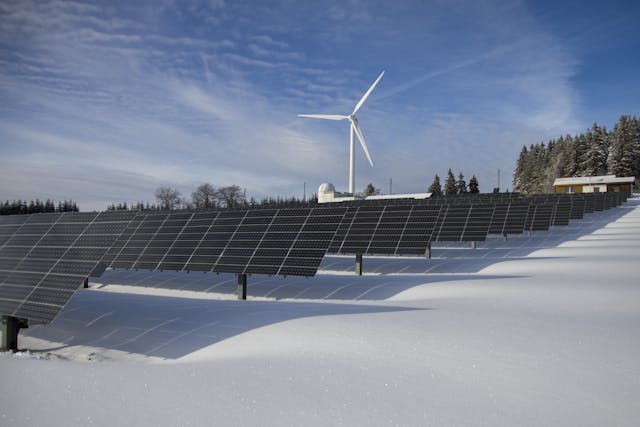Introduction
In the current landscape, sustainable living and development have become increasingly challenging. With each passing day, we are exposed to an array of environmental hazards that include the depletion of natural resources, rampant pollution, deforestation, the generation of e-waste, deteriorating air and water quality, and a thinning ozone layer.
Projections indicate that if we fail to take adequate measures promptly, CO2 emissions solely from the United States could reach a worrying volume of 4,807 million metric tons by 2050. These staggering figures spark genuine concern amongst various stakeholders, including industry majors and business owners. Consequently, the urgency for a viable solution has become more palpable than ever before. A promising approach that businesses and individuals are increasingly adopting is sustainable technology.
What is Sustainable Technology?

Sustainable technology is a broad term encapsulating innovations that take natural resources into consideration while fostering economic and social development. The primary objective of these technologies is to drastically curtail environment-related and ecological risks while creating sustainable products. Sustainable technology can be characterized by the following features:
- Substitution: Sustainable technology facilitates a transition from non-biodegradable to biodegradable materials in its manufacturing process. It also advocates for the replacement of non-renewable resources with their renewable counterparts.
- Prevention: This technological advancement pre-empts the deterioration, contamination, and other adverse environmental impacts resultant from its utilization or production.
- Efficiency: Sustainable technology is known for its energy and resource efficiency.
Exploring the Examples of Sustainable Technology
Sustainable technology embraces a wide range of innovative solutions that aim to mitigate environmental damage, improve resource efficiency, and promote sustainable development. Let’s delve into some examples:
- Public and Electric Transport: One of the pivotal moves towards a more sustainable future entails the welcoming shift from conventional gas-gulping vehicles to electric and hybrid vehicles. Public transportation systems are also being equipped with energy-efficient technologies to reduce their carbon footprint. Cities around the world are adopting electric buses and encouraging carpooling and ridesharing to cut down on emission levels.
- LED Light Technology:
Photo by Victor Aznabaev on Unsplash
Regarded as an energy-saving and durable solution, LED lights consume up to 90% less power compared to incandescent bulbs. Their low power requirement makes them an excellent match for solar-powered applications, further adding to their sustainable features. Their longer lifespan means reduced waste that goes into landfills as well.
- Solar Power: Harnessing solar power is a shining example of sustainable technology. Solar panels convert sunlight directly into electricity. As the most abundant energy source on Earth, solar energy offers an ideal path towards renewable energy. It helps reduce dependency on fossil fuels, contributing to the decrease in greenhouse gas emissions.
- Carbon Capture and Storage Technologies: These technologies capture waste carbon dioxide from significant emission sources like power plants, preventing it from entering the atmosphere. The trapped CO2 is then transported and deposited underground for long-term storage. Carbon capture technology provides a crucial solution for continually running traditional power industries while mitigating their environmental impact.
- Self-sufficient and LEED Buildings: Sustainable architecture is also taking center stage. Buildings are now designed to be energy-efficient and self-sufficient. Some structures even produce their power through solar panels or wind turbines. The Leadership in Energy and Environmental Design (LEED) certification measures just how ‘green’ a building is, considering factors like energy-saving measures, indoor environmental quality, and water efficiency.
From transportation to construction and power generation, sustainable technology is making its impact known in various sectors. By leveraging these technologies, society is taking considerable strides towards a greener and more ecologically balanced existence.
The Positive Impact of Sustainable Technology on Businesses
Sustainable environmental technology bears the potential of revolutionizing how businesses and public systems operate. Aiming to minimize any undesirable social and environmental repercussions, it significantly contributes to enhancing a company’s bottom line and reputation.
Here are a few reasons why businesses should implement sustainable technology:
- Risk Reduction and Favorable Project Outcomes: By utilizing renewable and biodegradable materials, your business indirectly shields the ecosystem—and itself—from the adverse effects of climate change. It’s interesting to note that 48% of businesses today are employing sustainability to enhance production and innovation. Businesses with strong ESG scores are also more likely to attract long-term investors.
- Improved Bottom Line: The effective use of resources facilitated by sustainable technology benefits your business economically. As a result, businesses save more, leading to an improvement in profits and better competition capabilities.
- Attract and Retain Top Talent: In a competitive world, attracting and retaining top talents is a constant struggle for businesses. Implementing sustainable technology gives businesses an edge in this regard. Notably, three quarters of millennials prefer working for businesses that uphold environmental and social standards.
Therefore, the implementation of sustainability in technology is no longer a luxury but a necessity in today’s world. By adopting sustainable practices and technologies, businesses can drive not only their growth but also contribute significantly to combating the alarming environmental threats we collectively face.





